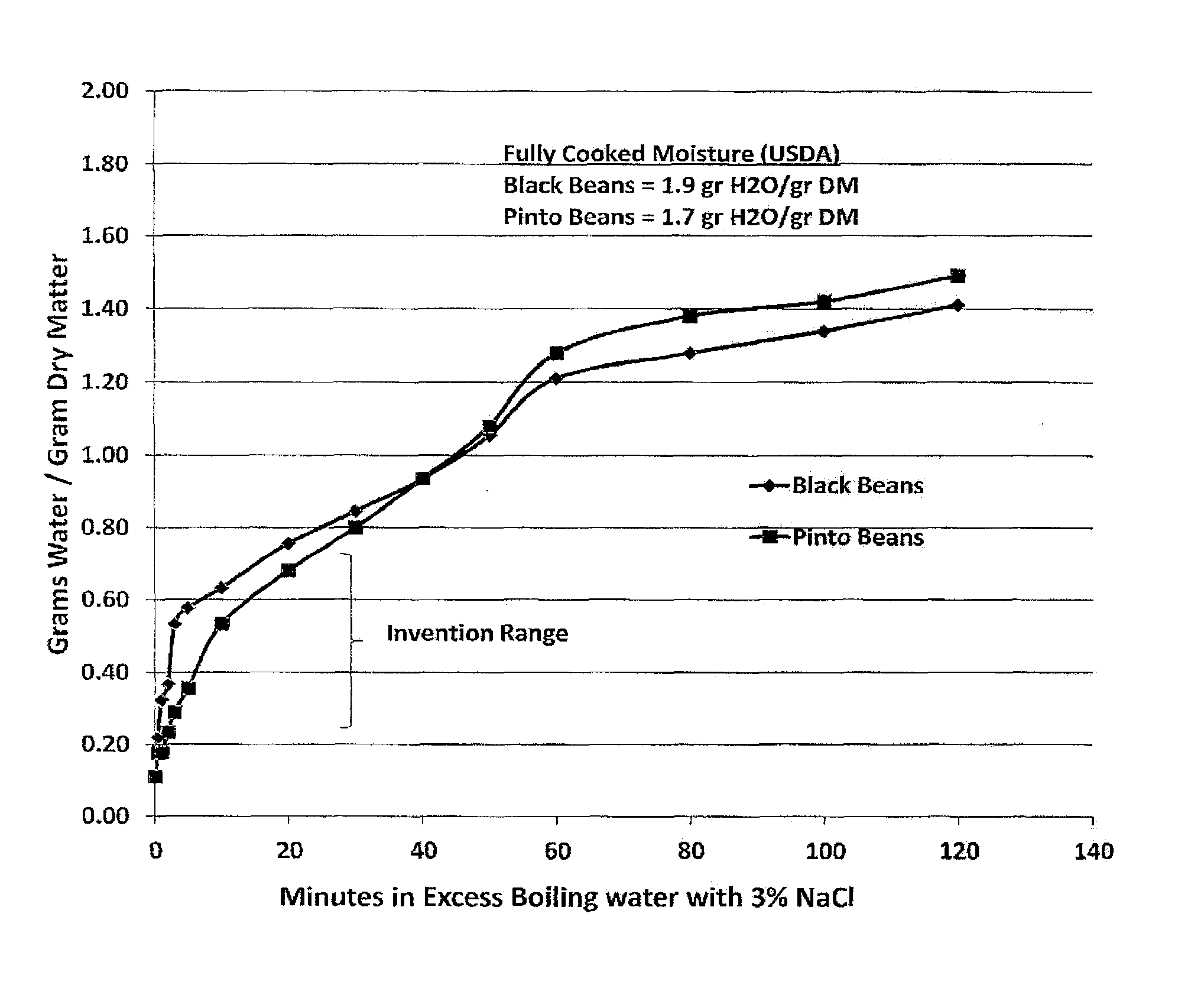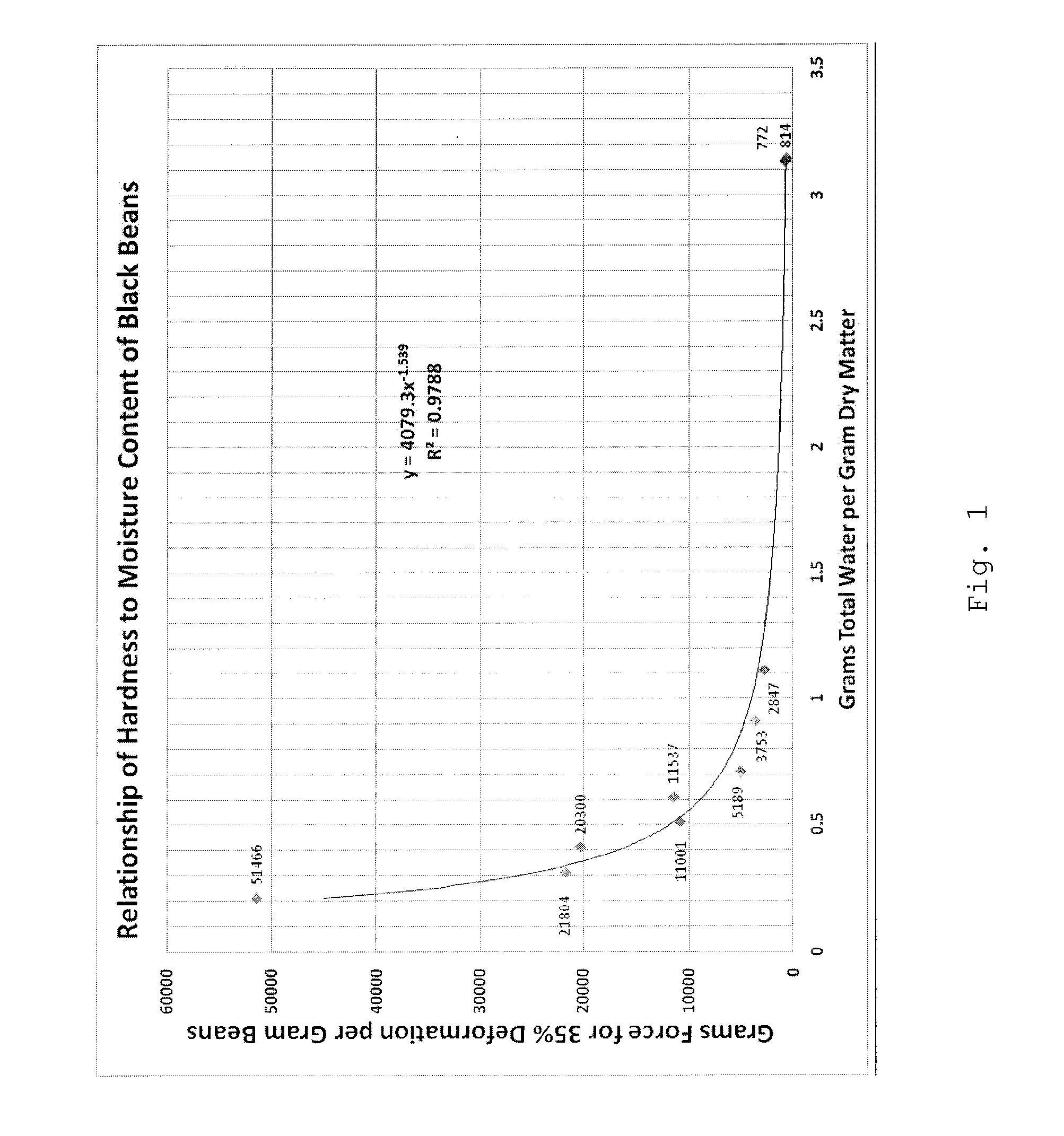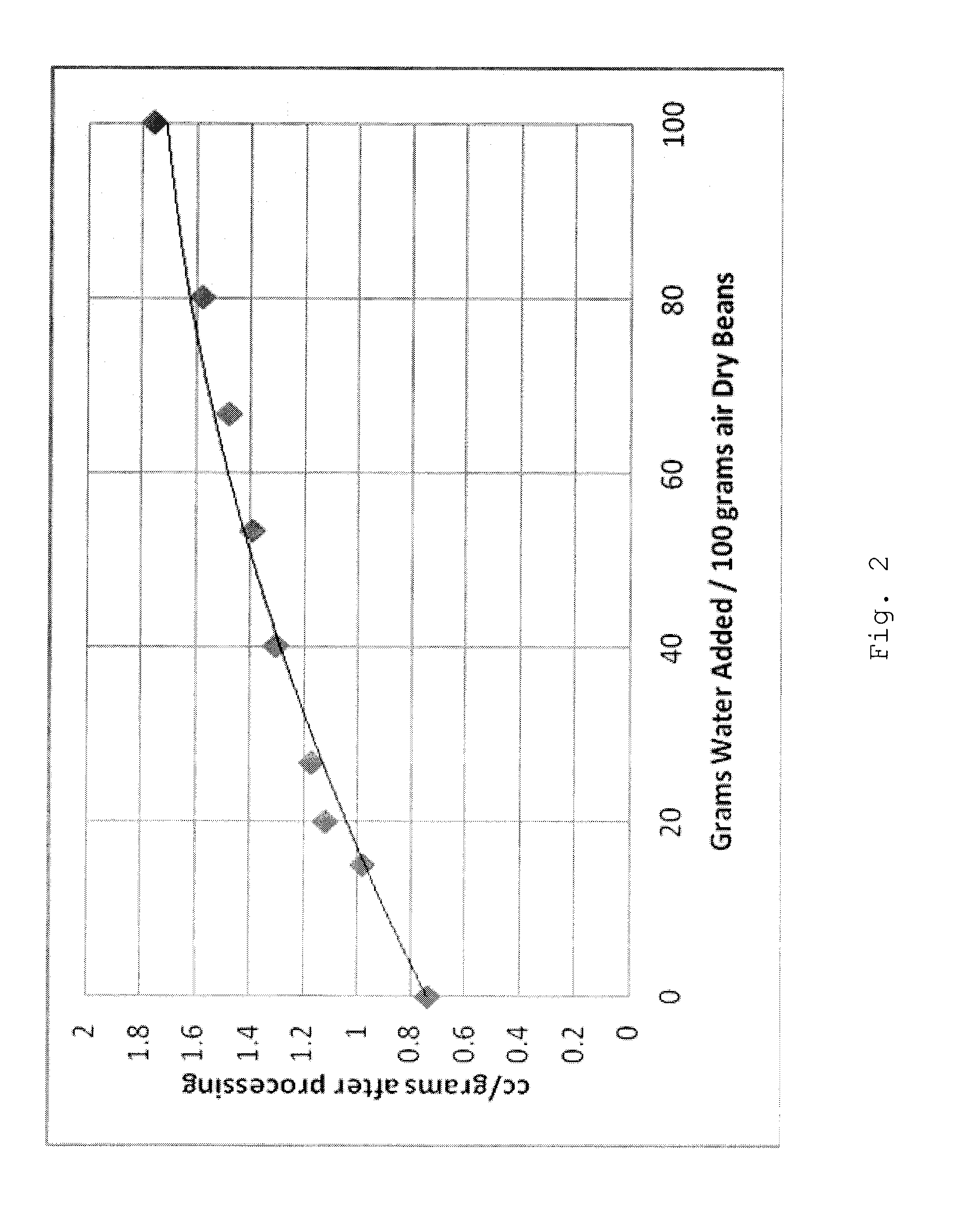Thermally processed seed product and method
a technology of thermal processing and seed products, applied in the field of pulses, can solve the problem that dried beans require a long cooking time, and achieve the effect of firm texture and bi
- Summary
- Abstract
- Description
- Claims
- Application Information
AI Technical Summary
Benefits of technology
Problems solved by technology
Method used
Image
Examples
example # 1
Example #1
[0054]Black Beans were partially hydrated with a controlled amount of water, salt and sucrose prior to thermal processing. Black beans (100 grams of air dry (˜10% moisture)) were placed in a glass container, to which was added 40 grams of distilled water, 1.2 grams of salt and 2 grams of sucrose. The beans, water, salt and sucrose was stored at 4 C for about 18 hours, during which time the beans absorbed approximately all of the water / sucrose / salt solution. The partially hydrated beans were then processed in a retort at ˜15 PSIG, ˜121° C. for 50 minutes. The beans were allowed to cool to room temperature and had a very appealing chewy texture and flavor. The water activity of the beans was approximately 0.95.
example # 2
Example #2
[0055]Black Beans were partially hydrated during thermal processing with a controlled amount of water, salt and sucrose. Black beans (100 grams of air dry (˜10% moisture)) were placed in a glass container, to which was added 40 grams of distilled water, 1.2 grams of salt and 2 grams of sucrose. Without allowing time for the beans to equilibrate with the solution, they were processed in a retort at ˜15 PSIG, ˜121° C. for 50 minutes. During this thermal processing, the beans absorbed substantially all of the water / sucrose / salt solution. The beans were allowed to cool to room temperature and had a very appealing chewy texture and flavor, which was very similar to that of the beans in Example #1. The moisture content of the beans was approximately 0.56 grams water / gram dry matter and their water activity was approximately 0.95.
example # 3
Example #3
[0056]Black Beans were partially hydrated in excess water for a controlled amount of time prior to thermal processing. Black beans (100 grams of air dry (˜10% moisture)) were placed for 3 minutes in approximately 5 liters of boiling water which included 3% salt and 0.1% dry savory seasoning. After this treatment, the moisture content of the beans was approximately 0.53 grams water per gram dry matter. The beans were then drained and processed in a retort at ˜15 PSIG, ˜121° C. for 50 minutes. The beans were allowed to cool to room temperature and had a very appealing chewy texture, which was similar to that in Examples #1 and 2. The flavor had a pleasant savory note. The water activity of the beans was approximately 0.95.
[0057]The invention, as described above can be used on other seeds and in particular cereal grains such as buckwheat, wheat, pearled barley, oats, etc, but not corn. When cereal grains are used, it is preferred that they be in groat form. Corn does not hydr...
PUM
 Login to View More
Login to View More Abstract
Description
Claims
Application Information
 Login to View More
Login to View More - R&D
- Intellectual Property
- Life Sciences
- Materials
- Tech Scout
- Unparalleled Data Quality
- Higher Quality Content
- 60% Fewer Hallucinations
Browse by: Latest US Patents, China's latest patents, Technical Efficacy Thesaurus, Application Domain, Technology Topic, Popular Technical Reports.
© 2025 PatSnap. All rights reserved.Legal|Privacy policy|Modern Slavery Act Transparency Statement|Sitemap|About US| Contact US: help@patsnap.com



